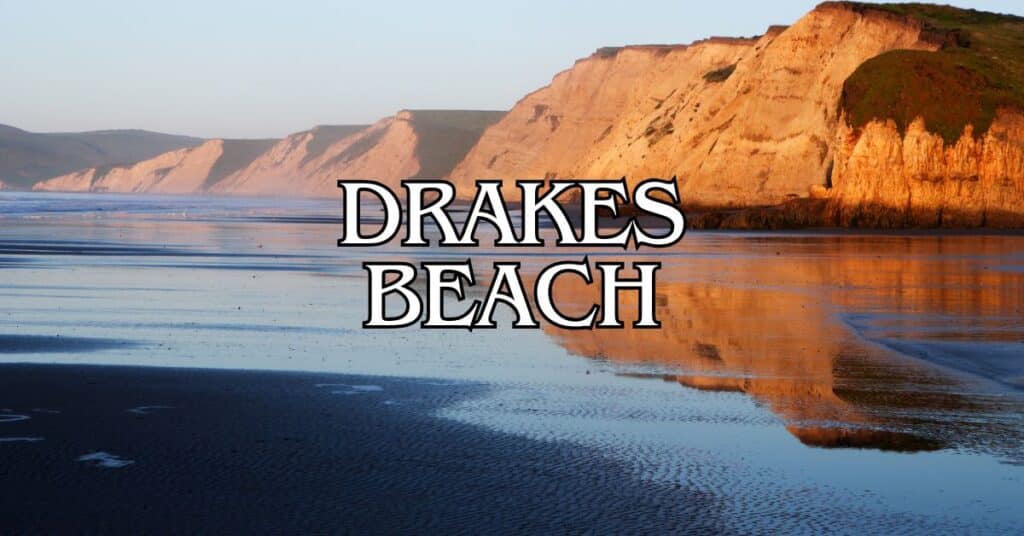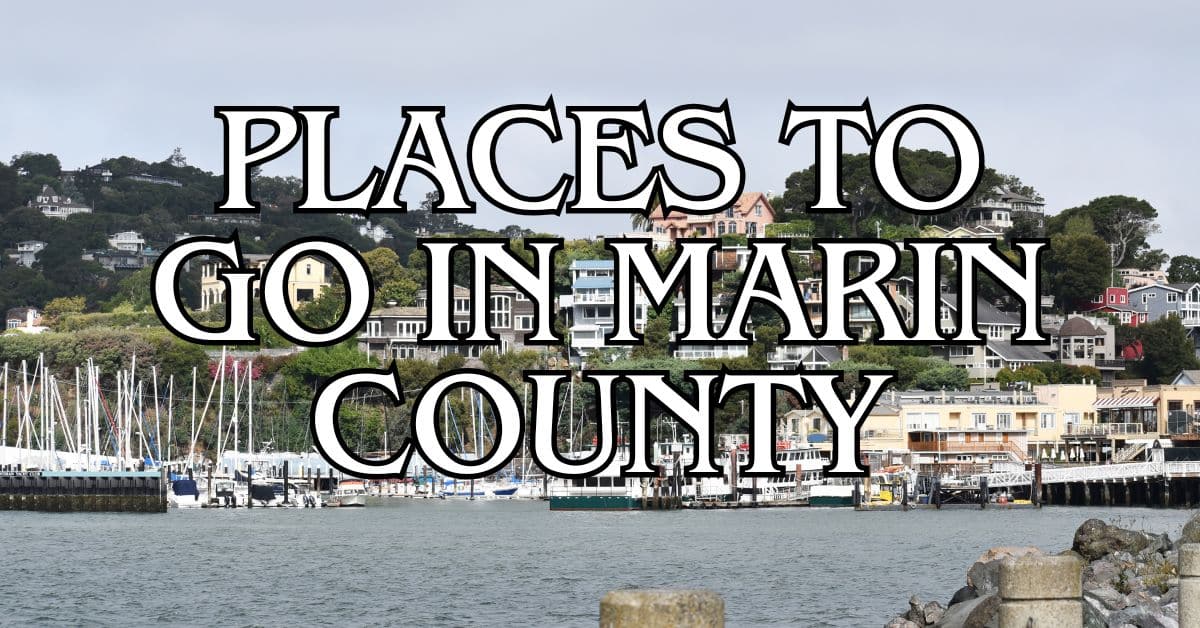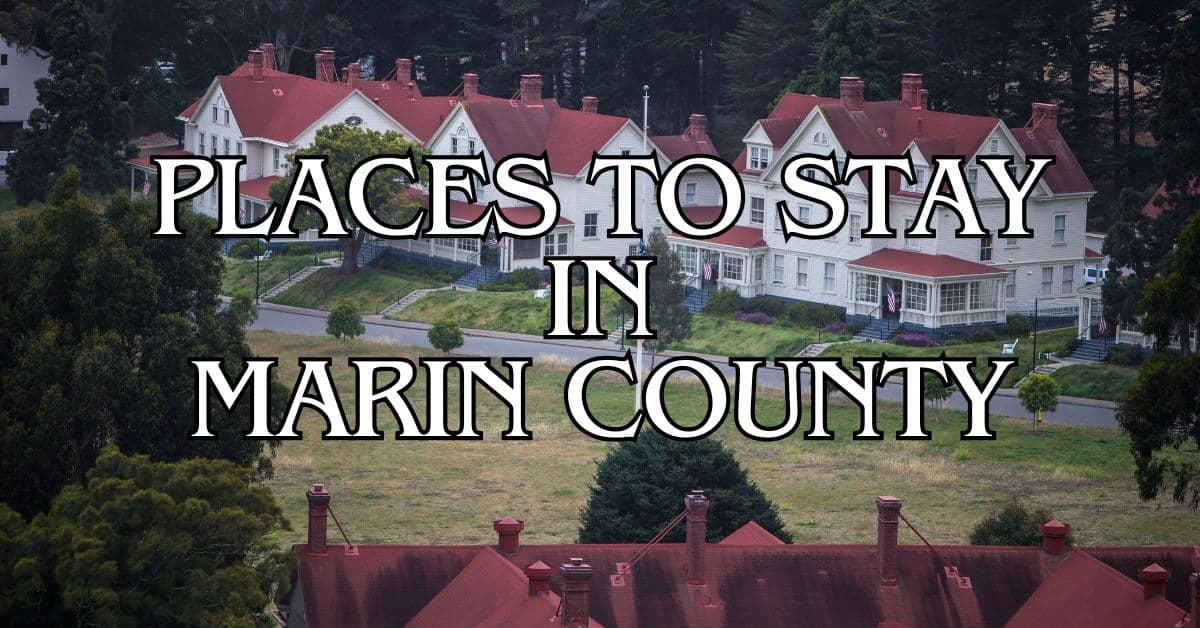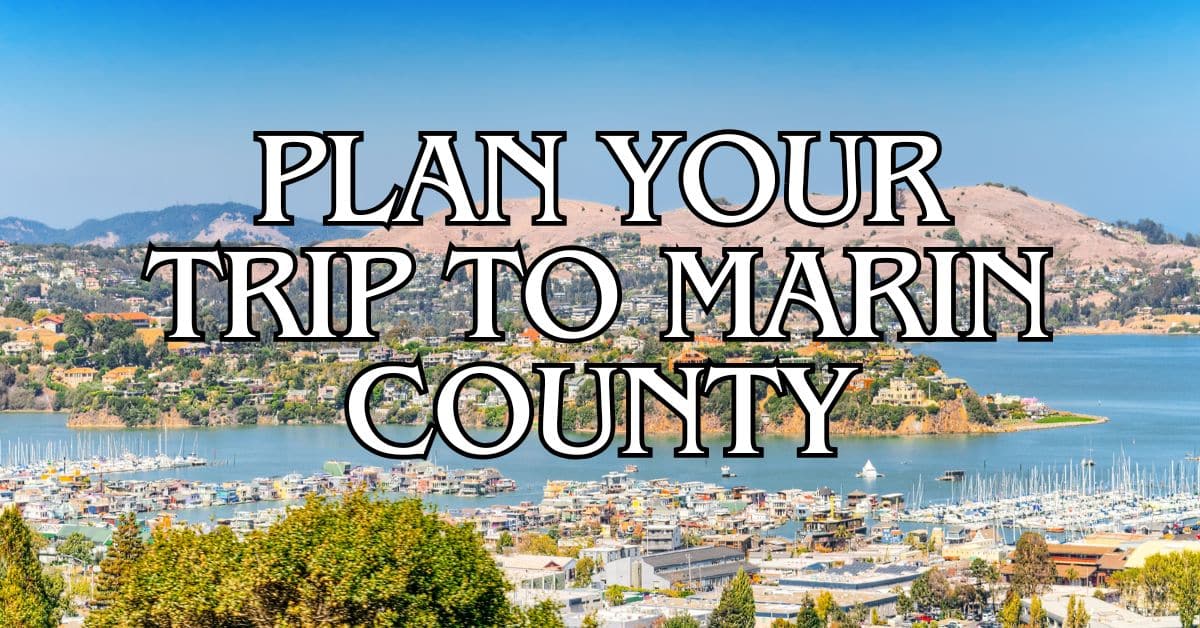Tucked away on the Point Reyes Peninsula, Drakes Beach gives you one of Marin County’s most memorable coastal experiences. The wide sandy shore sits between dramatic white sandstone cliffs and the blue waters of Drake’s Bay, making it a favorite for families and folks who just want a good walk or a peaceful spot to watch the sunset. Because the beach is tucked into a cove, you don’t get blasted by the winds and waves that can make other area beaches less inviting.
You’ll spot sand dollars scattered along the shoreline, and if you’re lucky, elephant seals lounging in the colder months. The whole place feels pretty welcoming, honestly—kids, grandparents, solo adventurers, anyone who wants to take in the wild beauty of Point Reyes National Seashore.
Discover hand-picked hotels and vacation homes tailored for every traveler. Skip booking fees and secure your dream stay today with real-time availability!
Browse Accommodations Now
If you’re planning to stay all day, you can even have a beach fire (just grab a permit at the visitor center when you arrive). On clear days, the water looks extra blue against the cliffs, and the drive out to West Marin feels totally worth it.
Overview of Drakes Beach
Drakes Beach is one of Point Reyes National Seashore’s most accessible and scenic destinations. With its sheltered cove, dramatic white cliffs, and family-friendly amenities, it draws visitors all year.
Location and Geography
Drakes Beach sits along the southern edge of Point Reyes Peninsula in Marin County, California. It faces Drakes Bay, forming a naturally protected cove.
Tall white sandstone cliffs hug the beach, giving it a striking look that’s hard to forget. The blue water and pale rock make for a pretty stunning scene.
Depending on the tides, the beach changes width. In summer, there’s usually a broad sandy stretch for walking or just sprawling out. The cove keeps the water calmer than other Point Reyes beaches, though it’s always chilly—don’t expect to swim without a wetsuit.
History and Significance
Drakes Beach and Bay get their name from Sir Francis Drake, the English explorer who probably landed here in 1579 during his trip around the world. Some historians say this is where he claimed “Nova Albion” for Queen Elizabeth I.
Long before Europeans arrived, the Coast Miwok people called this place home. The area holds deep cultural meaning for them as well as for those interested in early exploration.
The beach became part of Point Reyes National Seashore in 1962, and since then, it’s been protected as public land for everyone to enjoy.
In winter, elephant seals haul out on the sand, turning the beach into a wildlife viewing hotspot. It’s something to see—those creatures are huge!
Climate and Weather
Drakes Beach gets that mild, classic California coastal weather—think 50-65°F (10-18°C) most of the year, a bit warmer in summer.
The cove keeps the worst winds away, so even when the rest of Point Reyes gets gusty, you can usually hang out here without your hat flying off.
Fog rolls in on summer mornings but often burns off by afternoon, making for dramatic skies that photographers love. Winter brings more rain (November through March), but also some of the clearest days.
If you want the best odds for sun and fewer people, try spring (April-May) or fall (September-October).
Getting to Drakes Beach
Drakes Beach is tucked away in a beautiful part of Point Reyes National Seashore, so getting there takes a little effort—but the drive is half the fun with all those rolling hills.
Directions and Transportation Options
From San Francisco, hop on US-101 North, then exit onto Sir Francis Drake Boulevard in Marin County. Take that west to Highway 1 in Olema, then go north on Highway 1 and hang a left to keep following Sir Francis Drake Boulevard, which leads you right to the beach.
Coming from the north? Highway 1 southbound through western Marin County is a scenic option. Most Bay Area folks can make it in about an hour and a half, but traffic can slow you down.
Public transportation? Not really a thing out here, unfortunately. Driving yourself or joining a tour is your best bet.
Cyclists love the area, but be ready for hills and unpredictable weather.
Parking and Accessibility
Drakes Beach has a big parking lot near the sand, so you don’t have to haul gear far. Accessible beaches are rare out here, and this one delivers. Parking’s free, but on sunny weekends and holidays, it fills up fast—get there before 11am if you can.
You’ll find accessible spaces next to the visitor center. From there, a short paved path takes you to the beach.
Restrooms and water fountains are at the visitor center, plus picnic tables both near the parking and along the path.
During elephant seal pupping season (usually winter), parts of the beach close to protect the animals. It’s smart to check the National Park Service website before you go.
Visitor Experience
Drakes Beach feels welcoming, with enough facilities to make your visit comfortable but not so much that it loses its wild vibe.
Drakes Beach Visitor Center
The Visitor Center is a good place to start. Inside, you’ll find exhibits about the local marine life, wildlife, and a bit of history about Sir Francis Drake’s landing.
Usually, the center is open 10am to 5pm on weekends and holidays, but it’s best to check since hours can change. Rangers are around to answer questions and hand out maps of hiking trails.
In winter and early spring, rangers run special programs about the elephant seals. These talks are worth catching if you want to learn more about these massive creatures and how to keep a safe distance.
Food and Amenities
Unlike some remote Point Reyes beaches, Drakes Beach has a small café in the visitor center that serves snacks, drinks, and sometimes sandwiches—depends on the day and staffing.
Restrooms with changing areas are by the parking lot. Water fountains and picnic tables make it easy to spend the whole day here.
If you want a real meal, bring a picnic or swing by Point Reyes Station (about 20 minutes away) for oysters or other local treats.
You can have a beach fire in designated spots with a permit, which is great for those chilly evenings.
Find the perfect hotel or vacation rental. Instant booking, no fees!
View Top Stays
Accessibility for All Travelers
Accessible parking is right by the beach entrance. A paved path leads to a viewing platform with a great overlook.
Wheelchair users can get into the visitor center via ramps, and the restrooms and exhibits are designed to be accessible.
Beach wheelchairs are available if you call the Bear Valley Visitor Center ahead of time—first come, first served.
The sand is pretty flat, making it easier to walk than some of Marin’s steeper beaches. Sheltered waters and gentle slopes mean families with kids or anyone with limited mobility can enjoy the place without too much worry.
Top Things to Do at Drakes Beach
Drakes Beach is perfect for both relaxing and getting active. Because the cove blocks wind and waves, you can actually enjoy the outdoors without getting sandblasted.
Hiking Trails and Walking Routes
You can walk for miles along the sand here. Just amble by the water and soak in the dramatic cliffs. The sand near the water is usually firm, so it’s not a slog.
Want a longer hike? The Drakes Beach to Limantour Beach trail is a solid 9-mile round trip with killer views. Wear good shoes—some parts get muddy.
The Chimney Rock Trail (1.6 miles round trip) is gorgeous, especially in spring when wildflowers pop. For an easy stroll, try the Drakes Beach Cliff Trail for great views without much effort.
Tide schedules matter—high tides can cut off parts of the beach, so plan ahead if you’re venturing far.
Wildlife Watching Opportunities
Drakes Beach is a wildlife enthusiast’s paradise. From January to April, keep an eye out for gray whales passing by. Bring binoculars if you have them.
Tule elk roam the Point Reyes area. You’ll see them more often up by Tomales Point, but every now and then, they wander closer to Drakes Beach. Early morning or late afternoon is your best shot.
Birders can spot shorebirds, hawks, and sometimes even peregrine falcons. Year-round, sandpipers and gulls hang out on the sand.
Harbor seals rest on the beach, especially during pupping season (March-June). Please keep at least 100 feet away—those pups need their space.
Photography and Scenic Views
Those white cliffs? They make every photo look epic. Morning light brings out the texture in the sandstone.
Sunsets here are special—the beach faces southwest, so you get golden light as the sun drops over the water. If you want more photo ops, the Point Reyes Lighthouse is a short drive away and totally worth it for sweeping views.
At low tide, you might spot shipwreck remnants—weathered wood in the sand makes for cool, moody shots.
The Kenneth C. Patrick Visitor Center (when open) sits on a little rise, so you can climb up for a panoramic view of the bay.
After a storm, driftwood and fresh cliff erosion give the beach a different look—sometimes the best photos come on those wild weather days.
Exploring the Natural Attractions Nearby
Drakes Beach is smack in the middle of some of California’s most jaw-dropping protected land. The surrounding area is a patchwork of cliffs, hills, and wild beaches, with plenty to explore if you want to wander.
Point Reyes National Seashore Highlights
Point Reyes National Seashore covers 71,000 acres of wild coastline and backcountry. There’s over 80 miles of beaches, all with their own vibe.
You’ll walk through everything from windswept grasslands to thick forests. The park is home to more than 1,500 plant and animal species—if you’re into biodiversity, this place is a goldmine.
Wildlife is everywhere. Tule elk hang out up north, seals dot the shoreline, and during winter and spring, you can spot migrating whales.
Hiking options range from easy loops to tough treks. The Earthquake Trail near the visitor center is a mellow 0.6-mile loop that shows off the San Andreas Fault’s handiwork.
Chimney Rock and Elephant Seal Overlook
Chimney Rock is one of those spots where you just have to stop and stare. The moderate 1.8-mile round trip trail runs along a narrow peninsula, with ocean on both sides.
From December through April, the Elephant Seal Overlook is the place to be. Hundreds of northern elephant seals crowd onto the beaches to breed and give birth. The males are massive—16 feet long and up to 5,000 pounds.
If you want to see the most action, aim for January through March. Bring binoculars and keep your distance so the seals can do their thing.
In spring, Chimney Rock bursts with wildflowers—goldfields, poppies, lupines. The hillsides turn into a painter’s palette. Why not linger a while and soak it in?
Point Reyes Lighthouse and Lifeboat Station
The historic Point Reyes Lighthouse perches on a rocky headland that juts boldly into the Pacific. Built back in 1870, it’s helped countless ships navigate what sailors once called “the stormiest, foggiest point on the Pacific Coast.”
To get there, you’ll have to tackle 308 steps down—and, yes, back up again. Inside the visitor center, you’ll find the original Fresnel lens and some genuinely interesting displays about what life was like for lighthouse keepers.
Just around the corner, the Point Reyes Lifeboat Station at Drakes Bay stands as a National Historic Landmark. Built in 1927, this restored rescue station offers a glimpse into the area’s dramatic maritime history.
Both spots are prime for whale watching between January and April. Fair warning: winds can whip up and fog rolls in fast, so even if it looks sunny, bring some layers.
The sites open Thursday through Monday, closing up shop on Tuesdays and Wednesdays. During the peak of whale migration (January-April), they usually swap out private car access for a shuttle on weekends.
Luxury stays to cozy cottages await, all with instant booking. Find the best deals!
Browse Marin Stays
Nature and Wildlife Around Drakes Beach
Drakes Beach is a haven for wildlife lovers. The meeting of land and sea here creates habitats for all sorts of critters—some you might not expect.
Tule Elk Reserve and Tomales Point
If you’re up for a little adventure, head to the Tule Elk Reserve at Tomales Point. These majestic elk were nearly wiped out but made a comeback after being reintroduced in 1978. Now, the herd’s over 400 strong.
You can spot them year-round, but fall is something special—rutting season brings some wild displays as bulls (with antlers that look like tree branches) spar for mates. Bulls can tip the scales at 700 pounds, while the females are a bit more petite.
The Tomales Point Trail is your best bet for elk sightings. It’s a 9.5-mile round-trip hike with coastal views that’ll have you reaching for your camera. Bring binoculars if you have them.
Marine and Bird Species
Drakes Beach is probably best known for its Northern elephant seals. These giants—some stretch 14 feet and weigh up to 5,000 pounds—haul out here to breed and give birth. December through March is prime time to catch the spectacle.
Harbor seals pop up in the surf all year, and if you swing by in spring, you might catch gray whales and their calves migrating along the coast.
Birders, you’re in for a treat. Keep your eyes peeled for:
- Western gulls
- Brown pelicans
- Peregrine falcons
- Sanderlings
- Great blue herons
The tidal pools here are worth a look, too. At low tide, you’ll find sea stars, anemones, little crabs—tiny worlds in the rocks.
Local Towns and Points of Interest
Drakes Beach isn’t the only thing going for this corner of Marin. A handful of nearby towns and natural spots are well worth the short drive.
Inverness and Point Reyes Station
Inverness, about 9 miles away on Tomales Bay, is a laid-back village with waterfront dining—Saltwater Oyster Depot is a local favorite. If you’re into quirky photo ops, check out the “Point Reyes” shipwreck.
Point Reyes Station is the main hub, about 20 minutes from the beach. Toby’s Feed Barn is a community staple with local goods and farmers markets. Don’t miss Cowgirl Creamery for some seriously good cheese.
For a meal, Station House Café and Osteria Stellina turn out dishes using local produce. The town’s shops are fun to poke around—lots of unique finds and outdoor gear.
Stinson Beach, Tomales Bay, and Limantour Beach
Tomales Bay is great for kayaking and wildlife watching. Rentals are available from Blue Waters Kayaking in Inverness or Marshall.
Stinson Beach, about 45 minutes south, is a popular swimming spot with warmer water than most of the coast. The town itself is tiny but has some good eats and a general store.
Limantour Beach is just 7 miles from Drakes Beach. It’s quieter, with gentler waves and a long stretch of sand—ideal for bird watching (over 490 species have been logged!), easy hikes, or a picnic that won’t get blown away.
Cypress Tree Tunnel and Earthquake Trail
The Cypress Tree Tunnel is one of those places you have to see to believe—a living hallway of Monterey cypress trees leading to the old RCA radio station. Early mornings are best if you want the place to yourself (and the best light for photos). It’s about 15 minutes from Drakes Beach.
The Earthquake Trail near the Bear Valley Visitor Center offers a quick 0.6-mile loop where you can actually see evidence of the 1906 quake. Interpretive signs tell the story of the San Andreas Fault and local geology.
Both spots are free and open year-round. They’re perfect for a quick detour, especially if Drakes Beach is socked in with fog or wind.
Dining and Fresh Oysters in the Area
Tomales Bay is pretty much oyster heaven. A handful of farms and restaurants serve these local beauties year-round, and the dining scene around Drakes Beach leans heavily on fresh, local ingredients.
Best Oyster Farms and Restaurants
Hog Island Oyster Company is a must. They raise their oysters right in Tomales Bay and serve them up at a casual outdoor picnic spot. Try them raw, grilled, or baked—there’s really no wrong way.
The Marshall Store is another classic, with killer oysters and a view that’s hard to beat. Their BBQ and smoked oysters are favorites for good reason.
Tomales Bay Oyster Company is a go-to if you want to shuck your own or just grab some to eat on-site. Lots of folks bring their own picnic fixings for a DIY feast.
If you’re after something fancier, Nick’s Cove Restaurant does seafood right—oysters, local catches, and all the trimmings.
Local Cuisine and Food Experiences
There’s more than oysters here, though. Station House Café in Point Reyes Station serves up comfort food with a California twist, using organic produce from nearby farms.
Saltwater Oyster Depot puts a creative spin on local seafood, with a menu that changes depending on what’s fresh.
Cheese lovers should make a beeline for Cowgirl Creamery in Point Reyes Station. Sample their award-winning cheeses or pick up supplies for a beach picnic.
Local farmers’ markets pop up weekly, offering everything from produce to baked goods. If you’re around on a Saturday, the Point Reyes Farmers Market is worth a stop.
For something quick, Palace Market in Point Reyes Station has sandwiches and ready-to-go eats—ideal for a picnic or hike.
Travel Tips for Visiting Drakes Beach
Visiting Drakes Beach in Point Reyes National Seashore isn’t complicated, but a little planning goes a long way. The coastal environment can be unpredictable.
Best Times to Visit
April through October usually brings the nicest weather. If you want to dodge crowds, aim for a weekday. Winter (December-March) is elephant seal season—access might be limited, but it’s a rare thing to see.
Check tide tables before heading out. Low tide means more beach and tide pools; high tide can shrink the sand to a sliver.
Mornings (before 11am) usually mean less wind and clearer skies. Sunsets are gorgeous, but it gets chilly fast—bring an extra layer.
If you can, avoid foggy afternoons in summer. The fog tends to burn off by late morning but creeps back in by mid-afternoon, especially from June to August.
Safety and Environmental Protection
Keep an eye out for sneaker waves—they come out of nowhere and can be really dangerous. Don’t turn your back on the ocean, and keep kids close.
Rip currents are a real hazard, especially after storms. If you get caught, swim parallel to the shore until you’re out of the current, then head in.
The water’s cold—rarely above 55°F (13°C)—so swimming without a wetsuit isn’t a great idea.
Respect wildlife closures, especially during elephant seal pupping season. Stay at least 100 feet from marine mammals.
Stick to marked trails to help protect the fragile coastal ecosystem—there are endangered species here that need their space.
Packing Essentials and Regulations
Clothing:
- Bring layers—weather flips fast out here.
- Even in summer, a windbreaker or jacket helps.
- Hat and sunscreen? Absolutely.
- Walking shoes that can handle a little sand and uneven ground.
Beach Items:
- Binoculars come in handy for spotting wildlife.
- The sand gets windy, so a beach blanket’s a good call.
- There’s no food service, so toss in water and snacks.
- Trash bags—don’t leave a mess, please.
If you want a beach fire, you’ll need to use the designated rings. Bring your own firewood since collecting driftwood isn’t allowed.
Cell service is pretty unreliable at Point Reyes. Download your maps ahead of time and let someone know your plans—just in case.
Dogs can’t come to Drakes Beach. Only service animals are allowed, mostly to protect the wildlife.
Find available hotels and vacation homes instantly. No fees, best rates guaranteed!
Check Availability Now






